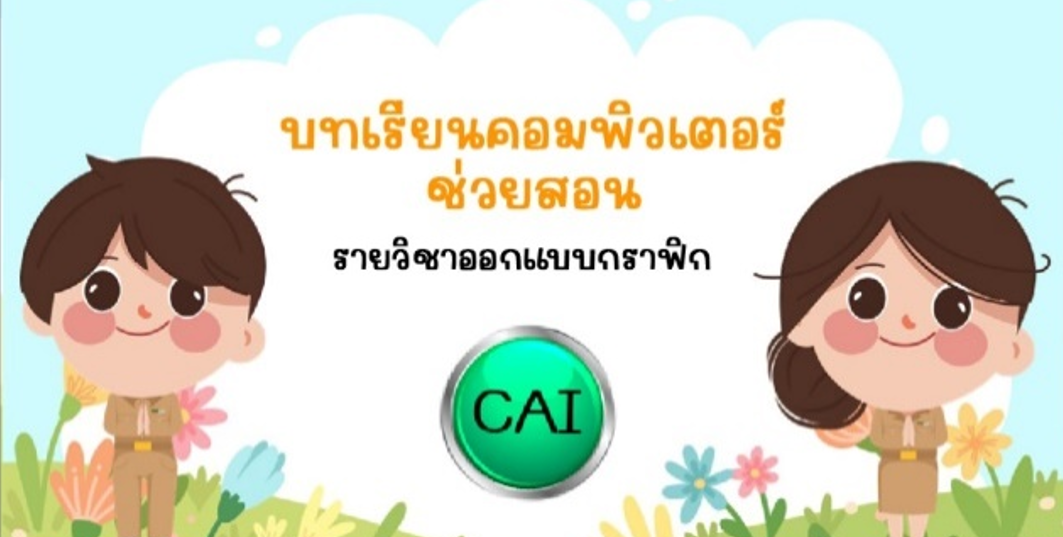Results of Using Computer-Assisted Instruction on the Web for the Subject of Graphic Design, for Students Majoring in Educational Technology and Computer Education, Faculty of Education, Buriram Rajabhat University
DOI:
https://doi.org/10.14456/jcct.2023.7Keywords:
Computer-Assisted Instruction Development on the Web, Graphic Design, Educational Technology and Computer EducationAbstract
This research aimed 1) to develop computer-assisted instruction on the web for the subject of graphic design, specifically tailored for students majoring in Educational Technology and Computer Education, Faculty of Education, Buriram Rajabhat University accomplishing a minimum efficiency rating of 80/80. 2) This research aimed to compare the learning outcomes of students before and after studying and 3) to examine the satisfaction level of students towards computer-assisted instruction on the. The sample group in this research consists of 29 first-year students majoring in Educational Technology and Computer Education, Faculty of Education, Buriram Rajabhat University, semester of the academic year 2565. The research tool consisted of 1) the computer-assisted instruction on the web, 2) the assessment instrument for measuring learning efficiency, and 3) the satisfaction questionnaire. The statistics used for data analysis included percentages, mean, standard deviation, E1/E2 value, and hypothesis testing using t-test. The research results found that 1) the computer-assisted instruction on the web had effective with a score of 81.20/84.20 which was higher than the set criterion of 80/80. 2) The learning efficiency of students who studied was significantly higher after the instruction compared to before with statistical significance at the .05. 3) The satisfaction with computer-assisted instruction on the web was high with an average rating of 4.48.
Downloads
References
1. กิดานันท์ มลิทอง. เทคโนโลยีการศึกษาและนวัตกรรม. (พิมพ์ครั้งที่ 2). กรุงเทพฯ : อรุณการพิมพ์. 2543.
2. ประหยัด จิระวรพงศ์. การบูรณาการไอซีทีสำหรับครู. วารสารศึกษาศาสตร์ มหาวิทยาลัยนเรศวร. 2553;12(2):157-167.
3. ศิริชัย สงวนแก้ว. แนวทางการพัฒนาโปรแกรมคอมพิวเตอร์ช่วยสอน. คอมพิวเตอร์รีวิว. 2534; 8(78):173-179.
4. วุฒิชัย ประสารสอย. บทเรียนคอมพิวเตอร์ช่วยสอน นวัตกรรมเพื่อการศึกษา. (พิมพ์ครั้งที่ 2). กรุงเทพฯ : ห้างหุ้นส่วน วีเจ พริ้นติ้ง. 2543.
5. ไพโรจน์ ตีรณธนากุล และ ไพบูลย์ เกียรติโกมล. Creating IMMCAI Package. วารสารครุศาสตร์อุตสาหกรรม. 2541;1(2):14-18.
6. ใจทิพย์ ณ สงขลา. การสอนผ่านเครือข่ายเวิลด์ไวด์เว็บ. วารสารครุศาสตร์. 2542;27(3):18-28.
7. วิชุดา รัตนเพียร. การเรียนการสอนผ่านเว็บ: ทางเลือกใหม่ของเทคโนโลยีการศึกษาไทย. วารสารครุศาสตร์. 2542;27(3):29-35.
8. ถนอมพร เลาจรัสแสง. คอมพิวเตอร์ช่วยสอน. กรุงเทพฯ: ศูนย์หนังสือแห่งจุฬาลงกรณ์มหาวิทยาลัย. 2541.
9. ล้วน สายยศ และ อังคณา สายยศ. เทคนิคการวิจัยทางการศึกษา. (พิมพ์ครั้งที่ 11). กรุงเทพฯ : สุวีริยาสาส์น. 2553.
10. บุญชม ศรีสะอาด. วิธีการทางสถิติสำหรับการวิจัย เล่ม 1. (พิมพ์ครั้งที่ 5). กรุงทพฯ : สุวีริยาสาส์น. 2556.
11. นารี ผามั่น. การพัฒนาบทเรียนคอมพิวเตอร์ช่วยสอนวิชาคณิตศาสตร์เรื่องการวัดสำหรับนักเรียนชั้นประถมศึกษาปีที่ 4. ปริญญานิพนธ์การศึกษามหาบัณฑิต สาขาวิชาเทคโนโลยีทางการศึกษา. มหาวิทยาลัยบูรพา. 2560.
12. ชนม์ขนิษฐ์ วิศิษฎ์สมบัติ. การพัฒนาบทเรียนคอมพิวเตอร์ช่วยสอนเรื่องการออกแบบโฮมเพจสำหรับชั้นมัธยมศึกษาปีที่ 2. วิทยานิพนธ์วิทยาศาสตร์มหาบัณฑิต สาขาวิชาการจัดการทรัพยากรมนุษย์. มหาวิทยาลัยศรีปทุม. 2558.

Downloads
Published
How to Cite
Issue
Section
Categories
License
Copyright (c) 2023 Journal of Computer and Creative Technology

This work is licensed under a Creative Commons Attribution-NonCommercial-NoDerivatives 4.0 International License.





























